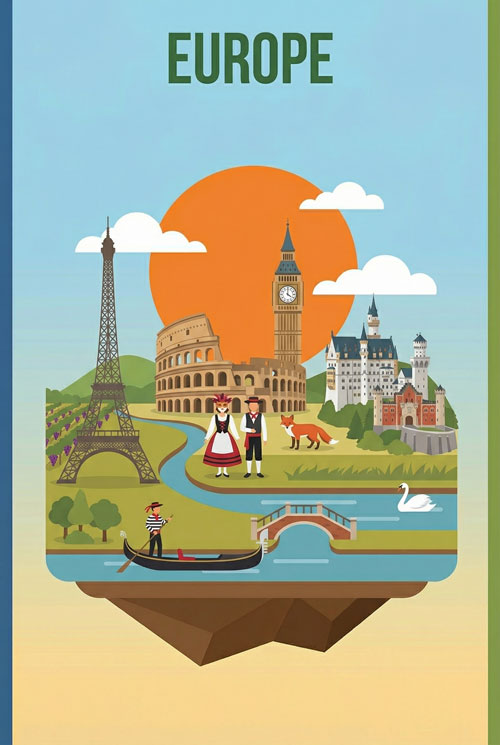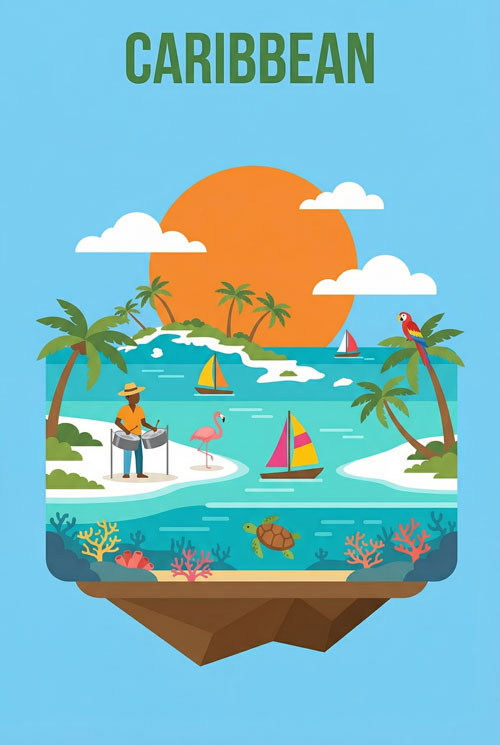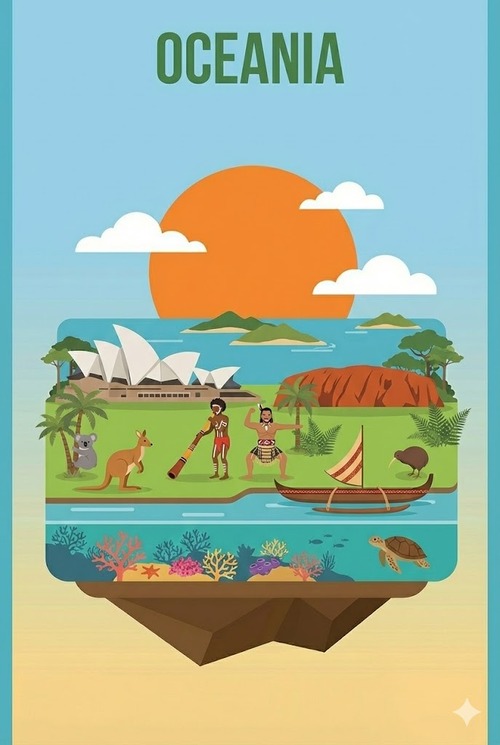eSIM Spain
Best Canary Island For Couples: Where to Go and When
Which Island is Best for Your Couple Type
The best Canary Island for couples depends on what you actually want to do and when you’re going. This matters more than people realize.
If you’re traveling March through May or September through October, Lanzarote wins for couples seeking quiet romance and reliable weather. Sea temperatures reach 65-70°F (18-21°C) during these months. Swimming stays comfortable.
The island avoids the summer crush. You’ll pay 30-40% less than peak season rates.
If you want year-round warmth and don’t mind crowds, Tenerife’s south coast delivers. The largest of the Canary Islands handles mass tourism better than others. Resorts cluster in Playa de las Américas and Los Cristianos.
Expect 75-80°F (24-27°C) water from July through September.
La Gomera and La Palma suit couples who value authenticity over convenience. Fewer tourists means genuine local experiences. Ferry access from Tenerife takes 45-60 minutes.
Accommodations are more limited, so book ahead.
Fuerteventura has the best beaches but the worst wind. December through February especially feels gusty and rough.
Skip winter here.
Gran Canaria offers year-round mild weather but deceives you. A 65°F (18°C) December feels colder than the thermometer suggests.
January through March isn’t ideal for water activities.
The real secret isn’t finding the best Canary Island to visit. It’s matching your couple archetype to the right island during the right season with accurate expectations about weather and crowds.
Which Canary Island is Perfect for Your Couple Type?
Answer these questions to discover your ideal romantic destination based on your travel style, timing, and priorities.
Understanding the Year-Round Sun Myth
Most travel guides promise “year-round sunshine” in the Canary Islands. This is technically true but misleading.
Yes, you’ll see the sun almost every day. But air temperature doesn’t tell the whole story.
Sea temperature is what actually matters for swimming and beach relaxation.
From January through March, ocean temperatures across all islands drop to 61-64°F (16-18°C). This sounds tolerable. But try staying in the water for more than 10 minutes.
Your fingers go numb. Most couples find this uncomfortable for extended swimming despite the “sunny” forecast.
Wind is the other problem nobody mentions. Lanzarote and Fuerteventura sit in a wind corridor. December through March brings sustained gusts that kick up sand and make sunbathing miserable.
Tenerife’s north coast experiences similar winter windiness, though the south stays calmer.
April through June brings the sweet spot. Air temperatures climb to 70-75°F (21-24°C). Sea temperatures reach 65-68°F (18-20°C).
Wind drops significantly. Fewer tourists visit than summer, yet conditions are reliable enough for beach time without wetsuits.
July through September reverses the problem. Temperatures soar to 82-86°F (28-30°C) air and 75-78°F (24-26°C) water. Perfect for swimming.
Terrible for avoiding crowds. Hotels fill completely 2-4 weeks ahead during June through August. Prices jump 50-100%.
October remains solid. Temperatures still feel warm. Crowds thin out compared to September.
This is when experienced travelers book return trips.
November marks the transition month. Weather remains decent, but it’s unpredictable. Some days feel summer-warm.
Others bring unexpected rain showers.
December feels too early to most travelers. It’s cheaper and less crowded than summer. But the cold ocean temperatures and wind gusts surprise people who expect perpetual beach weather.
Month-by-Month Weather Reality by Island
Each island’s weather pattern varies more than most guides acknowledge. Location within the Canary Islands matters as much as the month.
Tenerife
Tenerife and Gran Canaria split into distinct climate zones. The north coast from Puerto de la Cruz westward stays cooler and windier year-round. January averages 62°F (17°C) air and 61°F (16°C) water.
The south coast around Playa de las Américas runs 5-10 degrees warmer. July hits 84°F (29°C) air and 76°F (24°C) water.
If you’re choosing Tenerife, book the south for couples seeking warmth.
Gran Canaria
Gran Canaria’s weather stays steady year-round. Don’t expect dramatic seasonal shifts. December through February averages 65°F (18°C).
July through September peaks at 80°F (27°C). The difference feels smaller than other islands.
Southern beaches near Playa del Inglés get more protection and feel slightly warmer than the north coast around Las Palmas.
Lanzarote
Lanzarote offers predictability with a wind catch. April through May delivers ideal conditions: 72°F (22°C) air, 66°F (19°C) water, and calm winds. September through October repeats this pattern.
December through February brings 61°F (16°C) water and persistent north winds that channel through the island’s geography.
If Lanzarote appeals to you, avoid winter months unless you love hiking in cool, windy conditions.
Fuerteventura
Fuerteventura has spectacular beaches but challenging water conditions. Summer crowds are massive because the weather is undeniably warm and the golden sands are genuinely exceptional.
But winter wind makes the island feel less romantic. Sea temperatures drop to 61-62°F (16-17°C) from December through February. Strong winds blow consistently.
The beaches feel empty, but not in a peaceful way. It’s empty because conditions don’t favor spending hours outside.
La Gomera and La Palma
La Gomera and La Palma experience similar patterns but milder. Being in the western island group, they maintain slightly cooler temperatures year-round.
The trade-off is lush vegetation and green hiking. La Gomera feels tropical while southern islands feel desert-like.
Sea temperatures run 1-2 degrees cooler than Tenerife. April and May offer the best balance.
Island Comparison by Couple Archetype
Not all couples seek the same experience. Your personality determines which island actually works.
Beach Lovers
For couples prioritizing water time and warm temperatures, Tenerife’s south coast or Fuerteventura in June through August wins. Accept the crowds and book early.
July water temperatures peak at 76-78°F (24-26°C). These islands offer the most consistent beach conditions.
Bring sunscreen. Bring a hat. Bring patience with crowds.
Adventure Seekers
For couples valuing hiking and exploration, Tenerife’s northern slopes and La Palma’s volcanic trails deliver. Mount Teide rises over 12,000 feet and offers other-worldly landscapes.
La Palma has fewer tourists and more authentic local trails. April through May offers ideal hiking temperatures at 70-75°F (21-24°C).
These islands require good footwear and water bottles, not swimwear.
Quiet Romance
For couples seeking authentic experiences and fewer tourists, La Gomera and La Palma lead. You sacrifice convenience for genuineness.
Ferry schedules are less frequent. Restaurants close earlier. Accommodations feel personal rather than corporate.
These islands reward patience and create a perfect place for a romantic getaway.
Nightlife Enthusiasts
For couples wanting beach clubs and evening energy, Tenerife’s Playa de las Américas and Gran Canaria’s Playa del Inglés offer year-round scenes. Both concentrate tourism in specific zones.
You can party hard and still find quiet neighborhoods nearby.
Summer (June-August) brings the most energy but the most people.
Budget-Conscious Travelers
Visit any island during April, May, September, or October. Hotel rates drop 30-40% compared to summer. Ferry and flight prices soften.
Restaurant reservations are easier. Weather remains good.
This is when smart couples plan trips.
Stop Overpaying in Roaming Fees (Or Wasting Time Hunting for Local SIM Cards)
Overseas travel often means choosing between outrageous roaming charges or scrambling for local SIM cards the moment you land.
One drains your budget. The other steals time away from your holiday.
Smart travelers are now switching over to eSIMs.
eSIMs give you data at a fraction of the cost of what your telco charges for roaming and most modern phones have eSIM technology set up – (although you’ll need to check your phone’s compatibility here).
How eSIM4.com Works:
- Step 1: Pick your destination and data plan
- Step 2: Scan our QR code (takes 3 minutes)
- Step 3: Land overseas with instant local network access
No queues. No tiny plastic cards. No bill shock.
Just seamless, affordable data from the moment you land.
Stop letting phone companies raid your travel budget. Join the smart travelers who’ve already switched.
Get Your eSIM NowNeighborhood-Level Recommendations: Avoiding Mass Tourism Zones
Island recommendations are incomplete without neighborhood specifics. Where you stay determines your actual experience.
Tenerife
In Tenerife, avoid Playa de las Américas and Los Cristianos if you want romance. These neighborhoods are tourist factories. Concrete high-rises, chain restaurants, and 24-hour party scenes dominate.
They’re fine if you want that energy. They’re miserable if you don’t.
Instead, explore La Laguna in Tenerife’s north. This historic university town feels genuinely Spanish. Cobblestone plazas, local restaurants, and actual residents populate the streets.
It’s 30 minutes from beaches but worlds away from resort zones. A couple can wander for hours and feel transported.
Accommodations here run €80-120 per night (as of October 2025) compared to €150-250 in tourist zones.
Lanzarote
Lanzarote groups tourists into specific southern zones. Puerto del Carmen handles most mass tourism, with a long stretch of hotels and Irish pubs.
It’s functional for beach access. It’s generic for romance.
Famara in the north offers an alternative. This surf-oriented village feels Bohemian and peaceful. Black sand beaches stretch for kilometers with limited development.
Wind picks up in winter, but spring and fall create ideal conditions. Stay in locally owned guesthouses rather than resort properties.
Gran Canaria
Gran Canaria concentrates its tourist machine in Playa del Inglés and Maspalomas. These zones run together into a continuous strip of hotels, tour operators, and shopping malls.
They work well for convenience but poorly for authentic experiences.
Vegueta in old Las Palmas offers urban romance instead. Historic architecture, local tapas bars, and minimal tourist presence make this neighborhood feel genuinely Canarian.
It’s a 30-minute drive to southern beaches but provides a cultural base.
The nearby beach of Playa de las Canteras in Las Palmas de Gran Canaria stretches nearly two miles with a protected swimming area and local atmosphere.
Fuerteventura
Fuerteventura’s tourism centers in Corralejo in the north and Morro Jable in the south. Corralejo feels more developed with kitesurfing culture and German tour groups.
Jandía Peninsula in the south avoids some tourist intensity. Villages like El Cotillo on the west coast maintain fishing-village character with fewer hotels.
Water sports dominate this island. If you don’t surf or windsurf, Fuerteventura might feel limited for couples.
La Gomera and La Palma
La Gomera’s main town San Sebastián functions as a ferry hub but offers little romance. Instead, base yourself in the interior.
Valle Gran Rey creates a hippie-colony atmosphere with organic restaurants and dramatic coastal scenery. Known as “la isla bonita” (the beautiful island), La Palma rewards couples who embrace slow travel.
La Palma spreads visitors across the island more evenly. Los Llanos de Aridane provides central access to hiking and star-gazing sites. Roque de los Muchachos offers some of the best stargazing in Spain’s territories.
Both islands require rental cars. Public transport barely functions here.
Adults-Only Accommodations Reality
Many couples search for “adults-only resorts” expecting quiet guarantees. The Canary Islands offer limited true adults-only properties compared to other European destinations.
This surprises people.
Most major hotel chains market properties as “family-friendly.” Some maintain adults-only sections within larger complexes. These sections create marginal separation at best.
Children run through common areas regardless of marketing claims.
True adults-only properties exist but require direct verification. Third-party booking sites sometimes misrepresent policies.
Email properties directly to confirm age restrictions before booking. Ask specific questions:
- Is the entire property adults-only or just certain sections?
- What is the minimum age? (Some properties allow 16+ while others require 18+)
- Do common areas like pools and restaurants enforce age restrictions?
Verified Adults-Only Options by Island
Tenerife: Several boutique hotels in the south maintain strict adults-only policies. Properties near Costa Adeje run €150-300 per night depending on season.
These places deliver what they promise but fill quickly during shoulder seasons.
Gran Canaria: A handful of southern properties near Meloneras enforce adults-only rules. Expect similar pricing to Tenerife.
These hotels cater to European couples seeking quiet beach access.
Lanzarote: Limited options exist. Most adults-only claims refer to hotels that simply discourage families rather than prohibit them.
Finding true adults-only accommodations requires persistent research.
Fuerteventura, La Gomera, La Palma: Almost no verified adults-only properties exist on these islands. Tourism infrastructure focuses on outdoor activities rather than resort romance.
If adults-only policies matter critically to your trip, Tenerife and Gran Canaria offer the most reliable options.
Island-Hopping Between Islands
Island-hopping creates practical challenges that travel blogs underestimate. Ferries run regularly between nearby islands but less frequently for distant pairs.
Ferry Routes That Actually Work
Tenerife to La Gomera: Multiple daily ferries. 45-60 minutes crossing. €30-50 per person one-way.
This route works well for day trips or three-day extensions.
Tenerife to La Palma: Direct ferries run less frequently. Most travelers fly instead (20 minutes, €40-80).
Ferry schedules change seasonally.
Lanzarote to Fuerteventura: Short crossing (30 minutes). Frequent daily departures. €15-25 per person.
This is the easiest inter-island ferry route.
Gran Canaria to Tenerife: Ferries exist but take 2-3 hours. Most people fly (30 minutes, €30-70).
The time savings justify flight costs.
La Gomera to La Palma: No direct ferry. You must route through Tenerife, adding hours and complexity.
Don’t attempt this routing in a single day.
Practical Island-Hopping Itineraries
Seven-Day Lanzarote-Fuerteventura Split
- Day 1-3: Lanzarote (Famara or Puerto del Carmen base)
- Day 4: Morning ferry crossing
- Day 5: Morning ferry to Lanzarote
- Day 6-7: Famara base exploring quiet north coast
- Return: Ferry home or fly out
Total ferry costs: €30-60 per person round-trip. This gives each island meaningful time without constant packing.
Ten-Day Tenerife-La Gomera-La Palma Itinerary
- Day 1-2: Tenerife north coast with La Laguna base
- Day 3-4: Morning ferry to La Gomera, explore island
- Day 5: Evening ferry return to Tenerife
- Day 6: Morning flight to La Palma
- Day 7-9: Explore volcanic landscapes and Caldera de Taburiente National Park
- Day 10: Return to Tenerife and depart
Total inter-island costs: €60-120 per person including one flight. You experience three islands without feeling rushed.
Ten-Day Gran Canaria-Lanzarote-Fuerteventura Itinerary
- Day 1-2: Gran Canaria (Vegueta and Meloneras)
- Day 3: Ferry to Lanzarote (1.5 hours, €30-50)
- Day 4-6: Lanzarote exploration including La Geria wine region
- Day 7: Ferry to Fuerteventura (30 minutes, €15-25)
- Day 8-10: Fuerteventura different regions
- Return: Ferry to Lanzarote, fly home
Total inter-island costs: €60-100 per person. This covers the central islands and includes the easiest ferry routes.
Key Advice
Avoid trying to visit more than three islands in one trip. Travel days accumulate. You’ll spend more time in transit than exploring.
Two islands with relaxed pacing creates a better couple experience than four islands rushed.
Budget Breakdown by Island, Season, and Accommodation Type
Costs change a lot by timing and location choices. All pricing reflects October 2025 estimates.
Shoulder Season (April-May and September-October)
Expect accommodation around €100-150 per night for mid-range hotels in quieter neighborhoods. Food runs €25-40 per couple for lunch and €40-70 for dinner at casual restaurants.
Ferries and inter-island transport add €15-60 depending on routes.
Total budget: A couple spending seven days budgets roughly €1,200-1,600 including flights from mainland Europe.
Peak Summer (June-August)
Accommodation costs double or triple. The same mid-range hotel jumps to €200-350 per night.
Food prices hold roughly steady, but availability requires advance reservations. Expect higher drink prices at tourist-heavy spots.
Total budget: A seven-day trip costs €2,200-3,200.
Winter (December-February)
Hotels drop to €70-120 per night in quieter neighborhoods. Food remains affordable.
The trade-off is weather unpredictability and cold ocean temperatures.
If you’re willing to skip beach swimming, costs drop significantly.
Total budget: A seven-day trip runs €1,000-1,400. This makes winter a solid choice for a winter trip focused on hiking rather than beach time.
Resort and Budget Options
Adults-only resort stays run:
- €120-200 per night (off-season)
- €200-350 per night (mid-season)
- €280-450 per night (peak summer)
Pricing depends on property and island. All-inclusive options sometimes offer better value if you eat and drink heavily.
Budget accommodations in La Gomera and La Palma run €60-100 per night. These quieter islands cost less but offer fewer nightlife and dining options.
Ferry costs barely change seasonally. A €40 ferry fare in January costs €40 in August.
This consistency makes ferries a predictable line item.
Total Trip Budget Summary
Two people, seven days, mid-range accommodation, two islands, shoulder season: €1,200-1,600
This covers flights from mainland Europe or other Canary Islands, accommodation, most food, ferry transport, and activities.
Final Logistics and Planning Checklist
Use this practical checklist to avoid common travel mistakes.
1. Determine Your Travel Dates
Avoid June through August if crowds frustrate you. March through May and September through October offer the best weather-to-crowd ratio.
Book accommodations 3-4 months ahead during these popular shoulder seasons.
2. Decide Which Island Matches Your Couple Archetype
Use the comparison matrix earlier. Don’t choose based on guidebook praise.
Choose based on whether you actually want beaches, hiking, nightlife, or quiet.
3. Research Neighborhoods Within Your Chosen Island
Spend 30 minutes reading recent reviews and looking at satellite images.
Avoid naming-only recommendations.
4. Book Accommodations Directly with Properties
Use Booking.com’s filter for “adults-only” as a starting point. Verify policies before clicking final purchase.
Email properties directly to confirm age restrictions.
5. Check Ferry Schedules If Island-Hopping Appeals to You
Visit Naviera Armas or Fred Olsen websites. These pages update monthly.
Book ferries 3 weeks ahead during summer. Don’t assume walk-up availability.
6. Download Offline Maps Covering Your Islands
Ferry terminals sometimes lack reliable data connectivity.
Having maps saves frustration.
7. Book Restaurants in Tourist Zones 1-2 Weeks Ahead
Peak times require advance planning. Local spots rarely require reservations.
8. Pack Layers
Even “sunny” islands experience windy mornings and cool evenings, especially September through May.
A light jacket and long-sleeved shirt prevent discomfort.
9. Purchase Travel Insurance Covering Cancellations
Ferry delays and rough seas happen.
Having coverage provides peace of mind.
10. Acknowledge That No Island in the Canary Islands Guarantees Perfect Weather
April and May offer the highest probability of good conditions. September offers decent odds but increasing rain chances.
December through February feels like a gamble.
This reality prevents disappointment.
Final advice: Book your ferry tickets or flights as soon as dates confirm. Check reviews of specific neighborhoods on Reddit’s travel forums for unfiltered couple experiences.
Read guest reviews on accommodations emphasizing quiet and romance rather than party atmosphere. Look for seasonal events happening during your travel dates.
Build in one unscheduled day per week to rest and wander locally rather than checking every tourist site.
Key Takeaways
• Choose islands based on couple archetype and travel dates, not generic “best” rankings. Lanzarote April-May wins for quiet romance. Tenerife south coast June-August wins for guaranteed warmth and crowds.
• Sea temperatures drop to 61-64°F (16-18°C) January-March across all islands, making extended swimming uncomfortable despite sunny forecasts. This is the year-round sun myth.
• Neighborhoods matter more than islands. Stay in La Laguna (Tenerife), Famara (Lanzarote), or Jandía (Fuerteventura) to avoid mass-tourism zones. Avoid Playa de las Américas and Playa del Inglés unless party scenes appeal to you.
• Adults-only resorts exist but require direct property verification. Third-party booking sites sometimes misrepresent policies. Call or email properties directly before booking.
• Ferry logistics are simpler than travel blogs suggest. Book 3 weeks ahead during summer. Accept that you can’t see 5 islands in 7 days. Focus on two islands with buffer days.













